京城探馆 | 国子监:被乾隆皇帝赞称的“京师首善之地”什么样?
京城探馆 | 国子监:被乾隆皇帝赞称的“京师首善之地”什么样?
Beijing's prosperous scenery | Guo Zi Jian: What is “the model for all places” praised by the Qianlong Emperor?
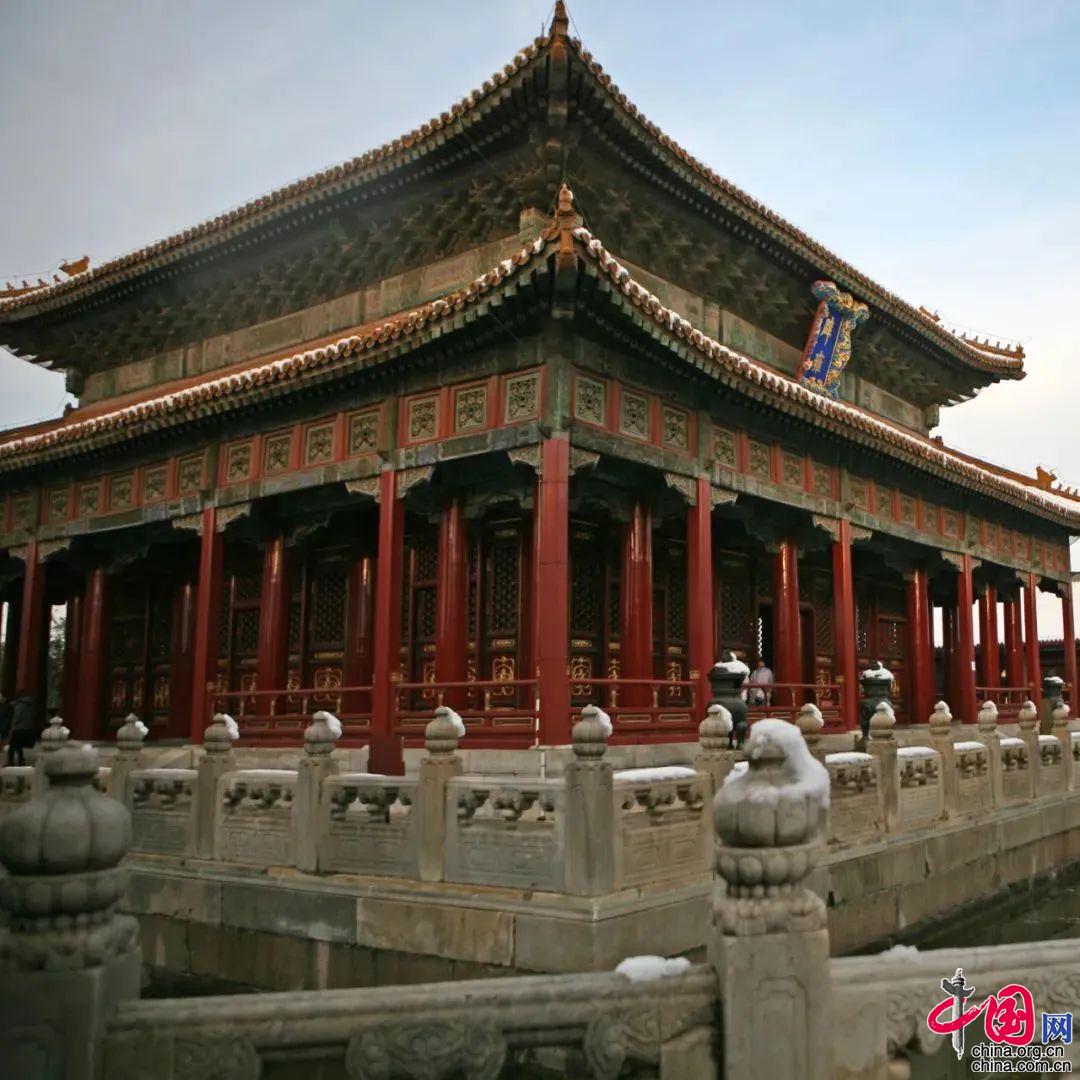
国子监
The Imperial College
儒学意蕴的集中体现
The culmination of Confucian culture
国子监博物馆始建于元代,合于"左庙右学"的古制,与北京孔庙分别作为中央最高学府和皇帝祭祀孔子的场所。
明朝时期行使双京制,在南京和北京分别都设有国子监,因此北京国子监又称为“北监”或“北雍” 。
The Imperial College, called “Guozijian” in Chinese, was founded in the Yuan Dynasty (1271-1368) according to the ancient architectural doctrine of “ancestral temple on the left and school on the right”. The Imperial College and the Confucius Temple in Beijing served as the highest educational institution and the venue for emperors to worship Confucius, respectively.
The Ming Dynasty (1368-1644) implemented a dual-capital system, so both Nanjing and Beijing had an Imperial College. Therefore, the Imperial College in Beijing was also called “Bei Jian” or “Bei Yong” (meaning “North School”).
国子监概览
我国古代教育最高学府
An Overview of the Imperial College
The highest educational institution in ancient China
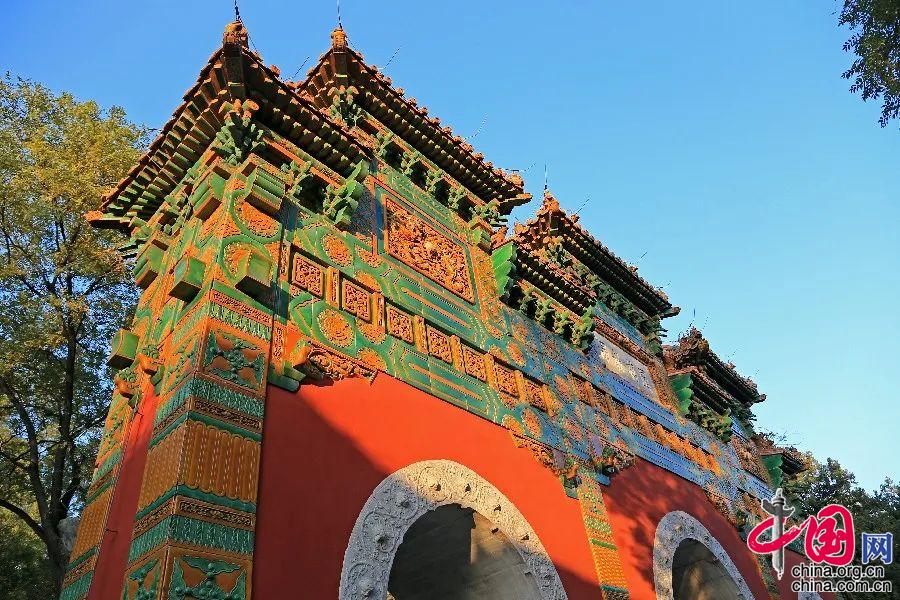
与孔庙仅一墙之隔的国子监位于成贤街中央。作为我国古代教育最高学府,北京国子监一直履行着元明清三朝的最高等教育使命,直到戊戌变法止。
The Imperial College, separated from the Confucius Temple by only a wall, is located in the middle part of Chengxian Street. As the highest educational institution in ancient China, the Imperial College in Beijing undertook the mission to train the best talent throughout the Yuan (1271-1368), Ming (1368-1644) and Qing (1644-1911) dynasties until it was closed after the Reform Movement of 1898.

国子监里外遍种国槐树,国槐代表着“登槐鼎之任”,古代即视之为“公卿大夫之树”。
Many pagoda trees are planted inside and outside the Imperial College, which signify that students could take the three most prestigious official positions. In ancient times, Chinese people saw pagoda trees as symbols of officialdom.
国子监街
形成于元代,清代称成贤街
Guozijian Street
Dating back to the Yuan Dynasty, it was called Chengxian Street in the Qing Dynasty
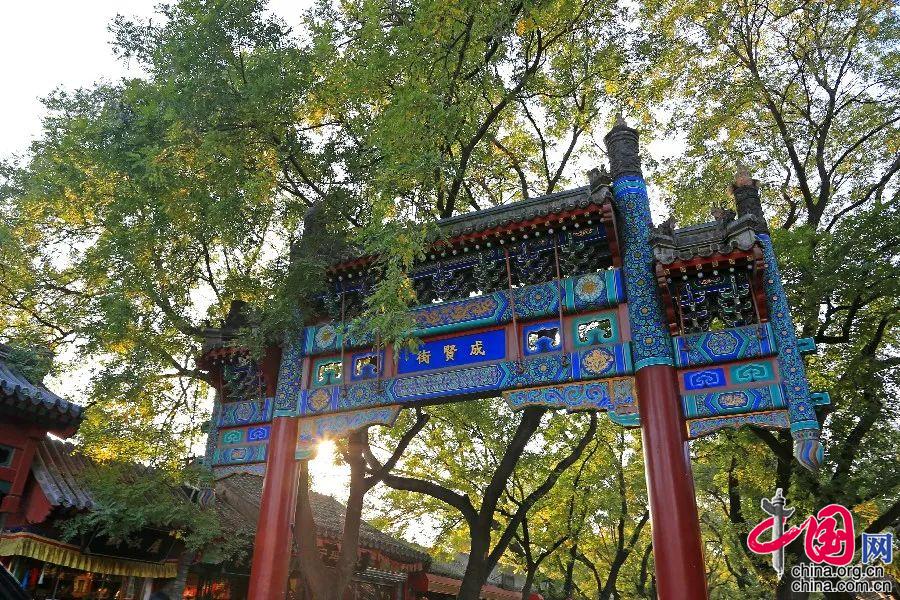
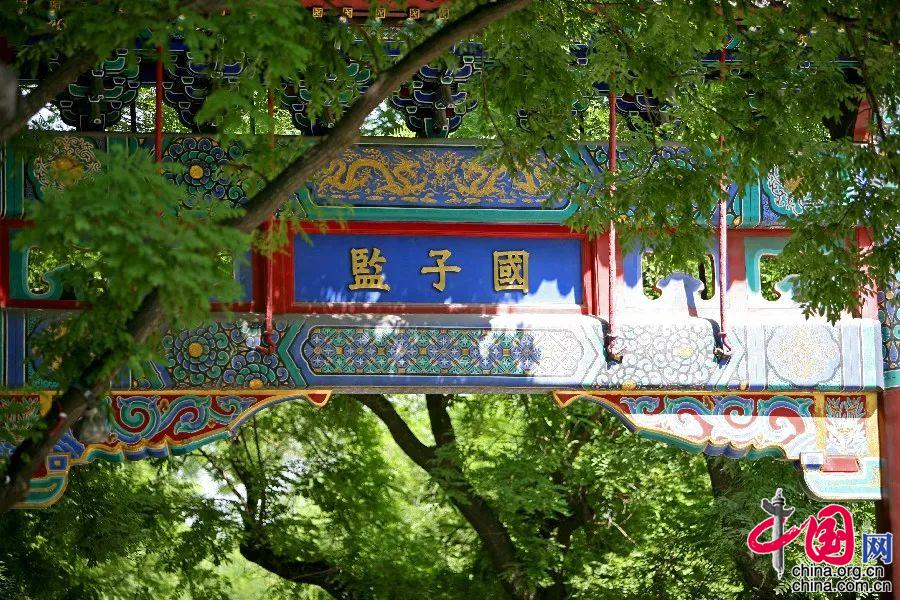
国子监街是一条东西向的胡同,因孔庙和国子监在此而得名。
国子监街东西贯通,全长669米,平均宽度11米,乾隆皇帝赞其为“京师为首善之区,而国子监为首善之地”。
Guozijian Street is an east-west alley named after the Imperial College located there.
The street stretches 669 meters from east to west, with an average width of 11 meters. Emperor Qianlong of the Qing Dynasty once said, “The capital is the best of all places, and the Imperial College is the most civilized place.”
集贤门
坐北朝南,是国子监的大门
Jixian Gate
Facing south, it is the main gate of the Imperial College

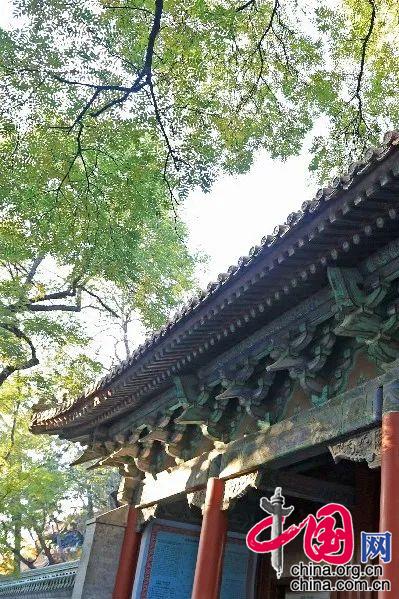
集贤门位于国子监中轴线建筑的顶端。
Jixian Gate is located at one end of the central axis of the Imperial College.
琉璃牌坊
全国唯一一座专门为教育而设立的牌坊
Glazed Memorial Archway
The Glazed Memorial Archway is the only of its kind set up for an educational institution in China
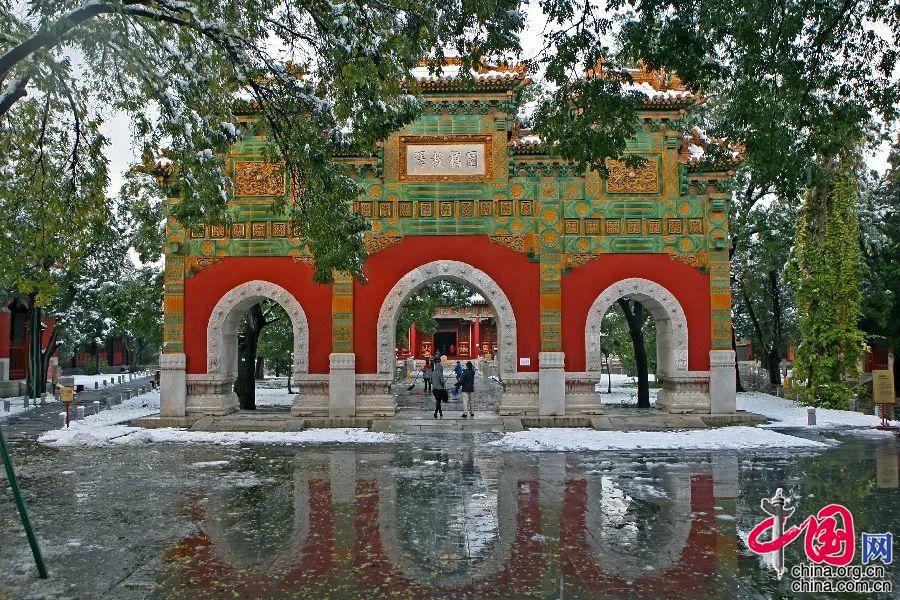
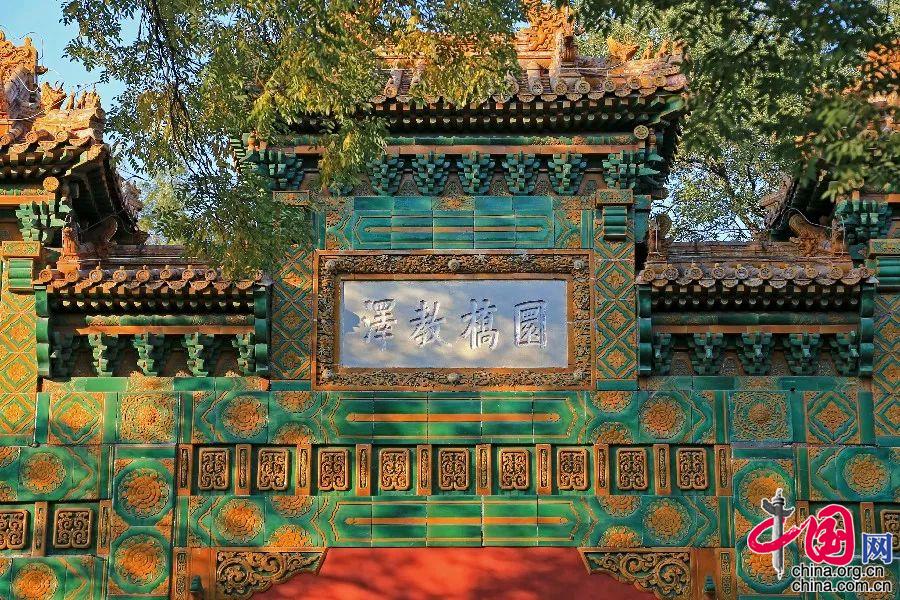
一入国子监集贤门,最美的琉璃牌坊便映入眼帘。这座三间四柱七楼庑殿顶式琉璃牌坊是京城唯一一座不属于寺院的琉璃牌坊,它正面书有“圆槁教译”,阴面为“学海节观”,自乾隆时代建成起,它便一直在阳光的反射下熠熠生辉,发出瑰丽的五彩光华。
As soon as one enters the Imperial College through Jixian Gate, the most beautiful glazed archway will come into view. This glazed archway with a hip roof, three passages, and four columns is the only one of its kind in Beijing, except for those in temples. On the front side of the building is the inscription "Huan Qiao Jiao Ze", and on the back side is the inscription "Xue Hai Jie Guan", which were both written by Emperor Qianlong and mean that “students sit in a place surrounded by water to listen to the emperor's lectures. Due to its limited space, it was necessary to limit the number of people listening to the lecture.” Since it was built in the reign of Emperor Qianlong, the archway has been shining brightly in the sunshine, emitting magnificent and colorful brilliance.
辟雍
国子监的中心建筑,是北京“六大宫殿”之一
Biyong Hall
As the central building of the Imperial College, it is one of the "Six Most Famous Halls " in Beijing
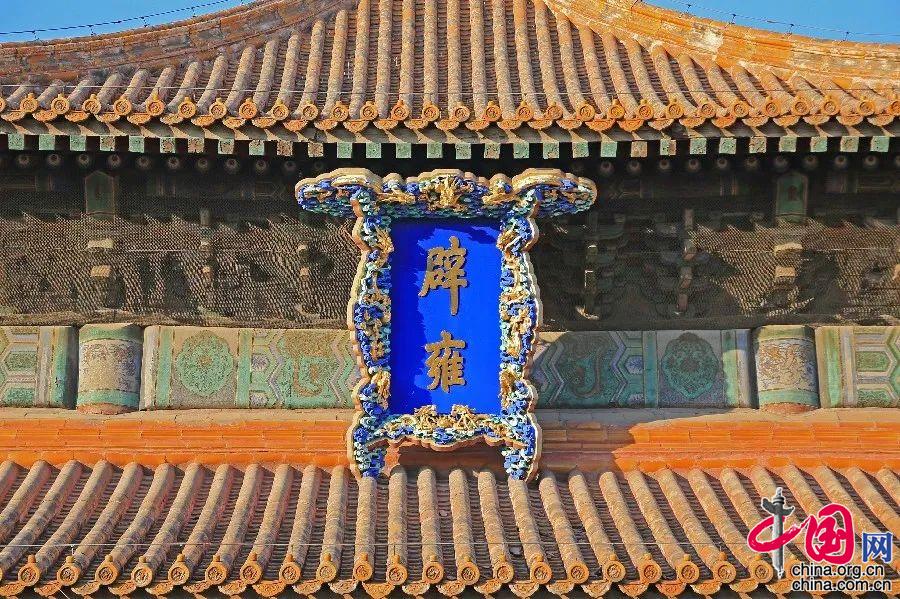
穿过琉璃坊拱券,便是国子监最中心的建筑——辟雍。它是方型重檐攒尖顶殿宇,建于一座圆形水池中央,四面大门均可开启,有长廊环绕四周。辟雍的四面架有小桥与院落相连,整个建筑概念为天圆地方。
Behind the Glazed Memorial Archway is the central building of the Imperial College, the Biyong Hall. It is a hall with square-shaped, double-eave pyramidal roof, built in the center of a circular pond, with doors on four sides and a long corridor surrounding it. There are bridges linking the hall to the compound. The whole building reflects the ancient Chinese philosophy that “Heaven is round and Earth is square”.
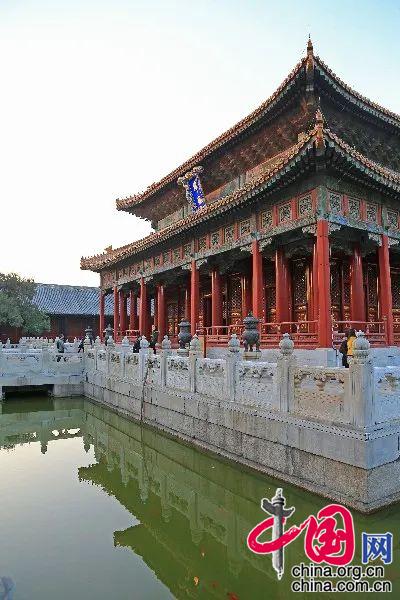
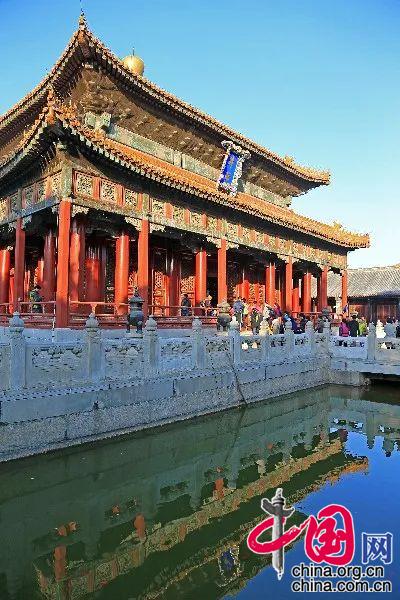
乾隆帝当年在此讲学,国学生则身处水池之外俯手恭听,由此可见封建统治者对高等教育的重视程度。
When Emperor Qianlong lectured here, students listened attentively around the pool, with their hands crossed. This demonstrated that feudal rulers attached great importance to higher education.
彝伦堂
国子监第三进院落主体建筑
Yilun Hall
The main building in the third courtyard of the Imperial College
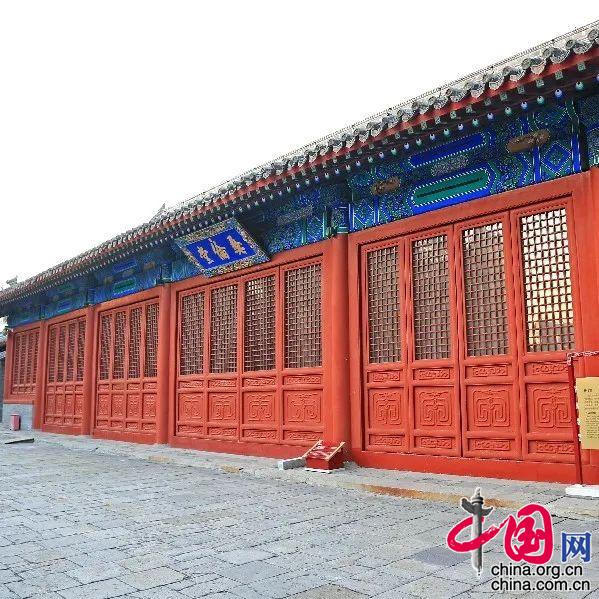
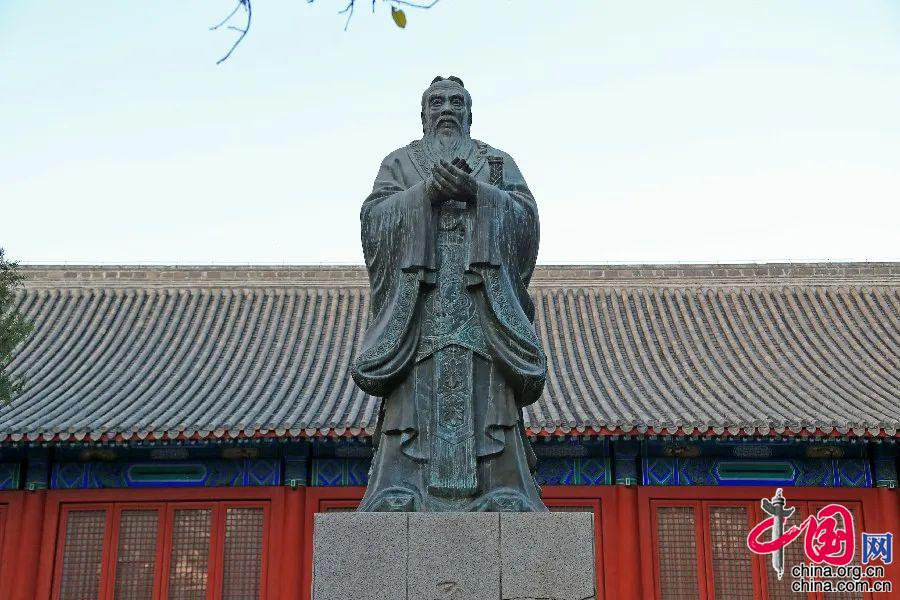
彝伦堂元代称崇文阁,是学校藏书之所。彝伦堂为单檐悬山顶式建筑,上覆灰筒瓦,后带抱厦三间,面阔七间,门上匾额为清康熙帝御书。前设灵台,是国子监召集监生列斑、集会之所。
Called the Chongwen in the Yuan Dynasty, the Yilun Hall served as the library of the Imperial College. The Yilun Hall features a single-eave overhanging gable roof covered with gray tube tiles, with a three-room corridor attached in the rear. It is seven rooms wide. The inscriptions on the horizontal board above the door were written by Emperor Kangxi of the Qing Dynasty. There was an open platform called Lingtai, which was where students in the Imperial College assembled for meetings.
国子监作为封建社会唯一一条普通民众进入仕途的道路,一直在平衡着天下文人与天下江山的关系,其作用必然是积极的、有极大贡献的。
这种对儒家思想的高度崇拜,离不开儒家礼制在中国封建社会中牢不可撼的统治地位。而国子监也作为一种源于旧典却高于旧典的准宗教建筑,经历元、明、清三朝的繁荣鼎盛后,渐渐成为历史的纪念物。
As the only conduit for ordinary people to enter the officialdom in feudal society, the Imperial College made positive contributions to balancing the relationship between the literati and the government.
Such high admiration for Confucianism cannot be separated from the unshakable dominance of Confucian rituals in Chinese feudal society. As a quasi-religious building originating from but going beyond old-time etiquettes, the Imperial College has gradually evolved into a historical monument after its heydays in the Yuan, Ming and Qing dynasties.

